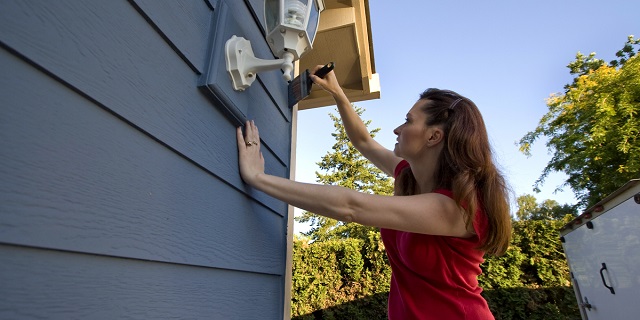With last winter’s snow and ice finally gone, and as temperatures get a little warmer each day, it’s time to start thinking about spring. However, before setting up the patio furniture and firing up the grill for the upcoming BBQ season, be sure to check out your property for signs of seasonal damage.
Winter storms can be very hard on your home and a little precautionary maintenance now can help prevent a small project from turning in to a major and costly repair. And with lumber costs and other hardware supplies more than doubling in price as the COVID-19 pandemic causes a supply shortage, this year, avoiding big repairs makes even more sense!
Start at the top
Your home’s roof is constantly under attack from the elements and winter is particularly damaging. The relentless freezing and thawing of any moisture trapped under shingles can cause damage that is made worse by high winds and nasty weather.
The loss of even a couple of shingles gives water all the space it needs to cause serious water damage to your home. Replace lost shingles as quickly as possible and check the flashing and seals around chimneys and vents to make sure there is no chance for water to gain access in these areas as well.
Be sure to also clear gutters and check that your downspouts are connected and free from debris. Your roof is the main defense your home has against inclement weather so you want to be sure everything is in good shape and has survived the winter intact.
Back on the ground
Once you’ve completed a check on the top of your house, take a few minutes to walk around the outside of your home. Check all painted surfaces for peeling paint especially around windows and doors. Carefully examine the caulking as well as cold weather can cause this material to crack and fall away. Repairing these gaps will not only conserve energy, it will also prevent moisture from getting trapped inside the frames which can cause the wood to rot and lead to a much higher repair bill down the road.
Next, it’s time to inspect the foundation of your home to look for any signs of damage. Even a small crack or missing grout could be all the room water needs to make its way into your basement. Keep in mind that in our climate, basements are especially vulnerable to leaks and the repeated freezing and thawing cycles we experience each year can put tremendous pressure on your home’s foundation.
If there are any low areas in the ground around your home’s foundation, consider filling these in as soon as possible. If allowed to accumulate next to your foundation, water can seep through even the tiniest of cracks. Over time, these cracks will only get wider and once larger cracks develop, you’ll have no choice but to dig down to the foundation to repair the damage.
Driveways and walkways
Just like your home’s foundation, your walkway and driveway can also be damaged by winter’s harsh weather. Any water that seeps through cracks in the asphalt will freeze during cold weather and the expanding ice can cause larger cracks to develop. Repeatedly driving and parking on these cracks will further weaken the asphalt and can even cause pieces of the asphalt to crumble and break away.
Treating your driveway with a good sealer can help protect your parking area in time for next winter. If you already have broken asphalt, you can purchase “cold patch” from most hardware stores to complete an emergency repair. Be sure to select the product best suited for the surface to be repaired. Then, simply clear away any loose pieces of asphalt from the damaged area and fill with the cold patch product. Tamp down to compact the material and force it into the broken asphalt.
Wooden decks and fences
Wooden decks and fences are very vulnerable to weather and while cedar or other pressure-treated woods are more resistant to weather damage, without sufficient maintenance even these materials will deteriorate over time. Re-apply stain or sealant as required and replace any sections of wood showing signs of rot.
Finally, be sure to give your lawn a little extra love as the steps you take now will pay huge dividends once the growing season gets underway.
Start by picking up any twigs that may have fallen from trees along with any other debris that has accumulated over the winter. Next, dethatch your lawn using a heavy rake with short tines to remove the dead grass. This will give healthy blades of grass the space they need to grow and will help water and nutrients get right down to the roots.
Repair any bare spots in your lawn by first raking the area and then fill with a good quality top soil. Spread grass seeds and cover lightly with more soil. Be sure to water the area regularly for the next two weeks and avoid mowing until the new grass seeds have taken root and are at least 2 inches high.




 Travel and lifestyle
Travel and lifestyle